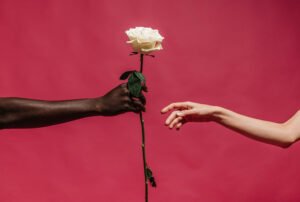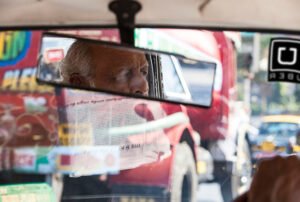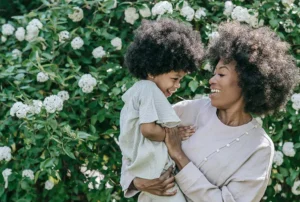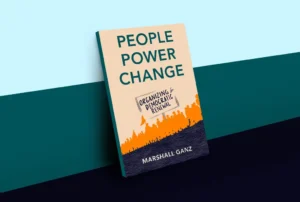
“Black men comprise about 13 percent of the male population, but about 35 percent of those incarcerated. One in three black men born today can expect to be incarcerated in his lifetime, compared to one in six Latino men and one in 17 white men. Black women are similarly impacted: one in 18 black women born in 2001 is likely to be incarcerated sometime in her life, compared to one in 111 white women.”
These statistics, found on the first page of a report by the Vera Institute of Justice, quantify the effects of the current rate of mass incarceration for Black and Brown Americans. In the report, titled An Unjust Burden: The Disparate Treatment of Black Americans in the Criminal Justice System, authors Elizabeth Hinton, Le Shae Henderson, and Cindy Reed analyze a variety of research in order to provide a holistic and succinct overview of institutional racism. Stemming from a foundation of historically discriminatory practices and policies, the discourse surrounding criminal matters—from courtrooms to news reports—is rooted in the unconscious or conscious belief that Black people are more prone to criminal behavior.
The coauthors note that a combination of “disparity in the enforcement of seemingly race-neutral laws,” along with “bias by decision makers at all stages of the justice process” account for the disproportionate criminalization of Black people, further exacerbated by their greater likelihood of living in “concentrated poverty.”
Hinton, Henderson, and Reed start at the beginning, showing how the abolition of slavery led to a certain insidious ingenuity for Southern lawmakers, who devised “unique forms of policing, sentencing and confinement” in order to “capitalize on a loophole in the 13th Amendment that states citizens cannot be enslaved unless convicted of a crime.” The resulting Black Codes, Vagrancy Laws, and Convict Leasing ensured that law enforcement would aggressively target newly freed Black people. The Northern States were much more subtle about it, resorting to the “disparate enforcement of various laws against ‘suspicious characters,’ disorderly conduct, keeping and visiting disorderly houses, drunkenness, and violations of city ordinances” which created “new forms of everyday surveillance and punishment in the lives of black people in the Northeast, Midwest, and West.”
Following the implementation of these policies, when data was collected for arrests and incarceration rates in the United States, the prevalence of black offenders was used as evidence of their inherent criminal proclivities, a narrative perpetuated over the ensuing decades and found at the heart of current stereotypes and implicit bias.
Hinton, Henderson, and Reed note that modern data analysis of crime patterns also contribute to inaccurate perceptions:
Sign up for our free newsletters
Subscribe to NPQ's newsletters to have our top stories delivered directly to your inbox.
By signing up, you agree to our privacy policy and terms of use, and to receive messages from NPQ and our partners.
Statistics linking black people and crime have historically overstated the problem of crime in black communities and produced a skewed depiction of American crime as a whole…For instance, in trying to understand where and when certain crimes occur, researchers from the National Commission on Law Enforcement and Administration of Justice spoke only with law enforcement agencies and officers stationed in low-income black communities. This skewed the data—which intentionally ignored the disproportionate police presence in these neighborhoods as well as delinquency among middle class, white, young men—yet was used to craft strategies for the War on Crime, such as increased patrol and surveillance in low-income communities of color.
The War on Crime was one of several political justice strategies implemented in the 20th century that eschewed the explicitly discriminatory language of past laws in favor of seemingly neutral phrasing and selective enforcement that produced different outcomes according to race. The report lists Drug laws, Habitual offender and three strikes laws, Hot Spots Policing, the Zero Tolerance policy, and the “Broken Windows” model as the main culprits of modern attempts to disproportionately criminalize Black people.
Another important feature of the report is its undertaking of the concept of “black on black crime,” a term that has been weaponized by the media to stoke portrayals of rampant violence within the black community, and even as a way to discredit protests against police brutality. The authors indicate that intraracial violence among Black people is in fact no greater than intraracial violence among other groups and, furthermore, that most violence occurs between people of the same race, according to the Bureau of Justice Statistics. However, crime is measured in a way that focuses primarily on low-income communities of color, which contributes to the myth of the prevalence of “black on black crime.” The FBI’s Uniform Crime Report, “considered the official measure of the national crime rate” is one that “has always emphasized street crime to the exclusion of organized and white-collar crime.”
Based on these stereotypes, practices, and perceptions of Black criminality, it is then no surprise that key actors within the justice system have been found to display significant implicit bias in dealing with Black defenders. The Vera Institute researchers warn that “such biases impact individual stages of the process, like policing, and also accumulate over multiple stages, through case processing, prosecution, and disposition.”
Police prejudice is the precursor to justice involvement for Black and Brown people, as they are free to stop, search, and arrest at their discretion. According to the report, “the best available evidence suggests that police bias toward black Americans, coupled with strategic decisions to deploy certain law enforcement practices—like hot spots policing— more heavily in black communities, increases the likelihood of encounters with police and negative outcomes like stops, searches, use of force, and arrest.” Then, once a case moves to the courtroom, bias from prosecutors, judges, and jurors “can lead to harsher outcomes for black people.” For the same crime, Black men receive sentences an average of 19.1 percent longer than those of their white male counterparts. Similarly, a Black or Latino youth are more likely to have the prosecutor request that they be tried as adults.
In summary, An Unjust Burden effectively aggregates existing data and research to call attention to the “subtle” and “ingrained” disparities within law enforcement that have persisted with minimal interference. A thorough analysis of the history and reasoning behind sociopolitical beliefs about the criminal tendencies of Black people, it reveals a criminal justice system that has played a major role in perpetuating racial inequities. The report concludes with the frightening and powerful assertion that “current approaches to criminal justice are extending levels of discrimination that are typically associated in the popular consciousness with a pre-civil rights era, but still exist today.”












